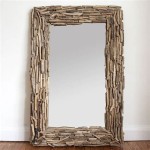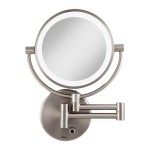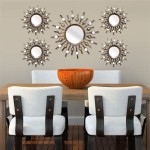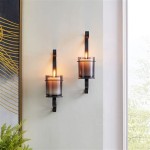What Is The Best Way To Hang a Heavy Mirror?
Hanging a heavy mirror requires careful planning and execution to ensure both safety and stability. Improper installation can lead to damage to the wall, the mirror itself, and potentially injury. This article will explore the best practices for securely mounting a heavy mirror on various wall types.
The first step in hanging a heavy mirror is assessing its weight and dimensions. This information is crucial for selecting the appropriate hanging hardware. Consult the manufacturer's instructions, if available, for weight limits and recommended hanging methods. If the mirror's weight exceeds the recommended limit for standard picture hangers, specialized heavy-duty hardware is necessary.
Understanding the wall type is equally important. Different wall constructions require different mounting techniques. Drywall is the most common wall type in modern homes, but older homes may have plaster walls. Additionally, some walls may contain concrete or brick behind the surface material. Identifying the wall type will dictate the type of anchors and fasteners required for a secure hold.
For drywall, several options exist for hanging heavy mirrors. Traditional toggle bolts are a popular choice, offering significant weight-bearing capacity. These bolts use spring-loaded wings that expand behind the drywall, distributing the weight over a larger area. Another option is using heavy-duty drywall anchors, specifically designed for substantial loads. These anchors typically require a larger pilot hole and offer enhanced gripping power compared to standard anchors.
When dealing with plaster walls, extra care must be taken due to their brittle nature. It is often recommended to use specialized plaster anchors that minimize the risk of cracking or crumbling. These anchors typically feature a wider thread pattern or a design that expands within the wall cavity, providing a more secure hold. Pre-drilling pilot holes of the correct size is essential to avoid damaging the plaster.
Concrete and brick walls present a different set of challenges. These materials require specialized masonry anchors and drills. Concrete anchors typically consist of a sleeve and a bolt that expands within the drilled hole. For brick walls, expansion anchors or screw-in anchors are commonly used. The specific type of anchor will depend on the weight of the mirror and the condition of the brick.
Once the appropriate hardware is selected, careful measurement and marking are vital. Use a level to ensure the mirror hangs straight. Mark the desired location of the hanging points on the wall and double-check the measurements before drilling any holes. Accuracy at this stage will prevent uneven hanging and potential instability.
Proper installation of the chosen hardware is the next crucial step. Follow the manufacturer's instructions carefully for each type of anchor or bolt. Ensure the anchors are fully seated and flush with the wall surface. Over-tightening can damage the wall or the anchor, while under-tightening can compromise the mirror's stability.
For exceptionally heavy mirrors, using D-rings and wire is a recommended approach. D-rings are attached to the back of the mirror, and wire is strung between them, creating a hanging loop. This method distributes the weight more evenly than relying on a single hanging point. Ensure the wire is rated for the weight of the mirror and is securely fastened to the D-rings.
French cleats offer another robust solution for heavy mirrors, particularly large ones. A French cleat consists of two interlocking pieces of wood, one attached to the wall and the other to the back of the mirror. This system provides a strong and stable connection, distributing the weight across a larger surface area. It also allows for easy leveling adjustments.
Regardless of the chosen hanging method, utilizing safety precautions is paramount. Wearing safety glasses during drilling protects the eyes from debris. Using a stud finder can help locate wall studs for added support, particularly for heavier mirrors. If unsure about any aspect of the installation process, consulting a professional handyman or contractor is advisable.
Choosing the right hanging method for a heavy mirror depends on several factors: the mirror's weight and dimensions, the wall type, and the available tools. By carefully considering these factors and following the appropriate installation procedures, one can ensure the mirror is securely mounted and remains a beautiful and safe addition to the space.

How To Hang A Heavy Mirror C R F T

How To Hang A Large Or Heavy Mirror
How To Hang A 100 Pound Mirror On Drywall Quora

A Better Way To Hang Heavy Mirror Hanging Pictures

How To Hang A Heavy Mirror

How To Hang A Heavy Mirror

How To Hang A Heavy Mirror With Pictures Wikihow

How To Hang A Heavy Mirror

How To Hang A Heavy Mirror On Brick Fireplace Drill Into Dans Le Lakehouse

How To Hang A Heavy Mirror With French Cleat








